What is an online marketplace?
The definition of an online marketplace, benefits, types, how to build one from scratch, and more.
An online marketplace is a type of e-commerce platform where people exchange goods, services, or information.
The online marketplace model is growing rapidly. In 2021, online marketplaces generated 67% of all global eCommerce sales. By 2027, third-party sales through online marketplaces will be the largest retail channel globally. Though the term “marketplace” has several economic uses, this article focuses on online marketplaces like Amazon and Airbnb.
In this article, you will learn about the key attributes that define an online marketplace, see examples across different niches, understand the unique business model, and get tips for building your online marketplace fast.
If you’ve ever used Amazon to shop, Upwork to find a freelancer, or Airbnb to book a stay, then you are probably familiar with the marketplace definition.
So, what is a marketplace? An online marketplace is a digital platform that connects two or more distinct groups of users in exchanges of products, services, or shared resources.
The platform enables these different user groups to transact directly and receive a fee or commission from successful transactions.
The key attributes that define an online marketplace include:
- Marketplaces have a multi-sided model with at least two distinct user groups (e.g., buyers and sellers, renters and providers).
- They facilitate transactions between the user groups.
- Customers can take actions like listing, browsing, booking, and purchasing directly on the platform.
- Marketplaces do not usually own the inventory themselves.
- The online platform generates revenue from fees charged on the facilitated transactions, not the sale of owned inventory.
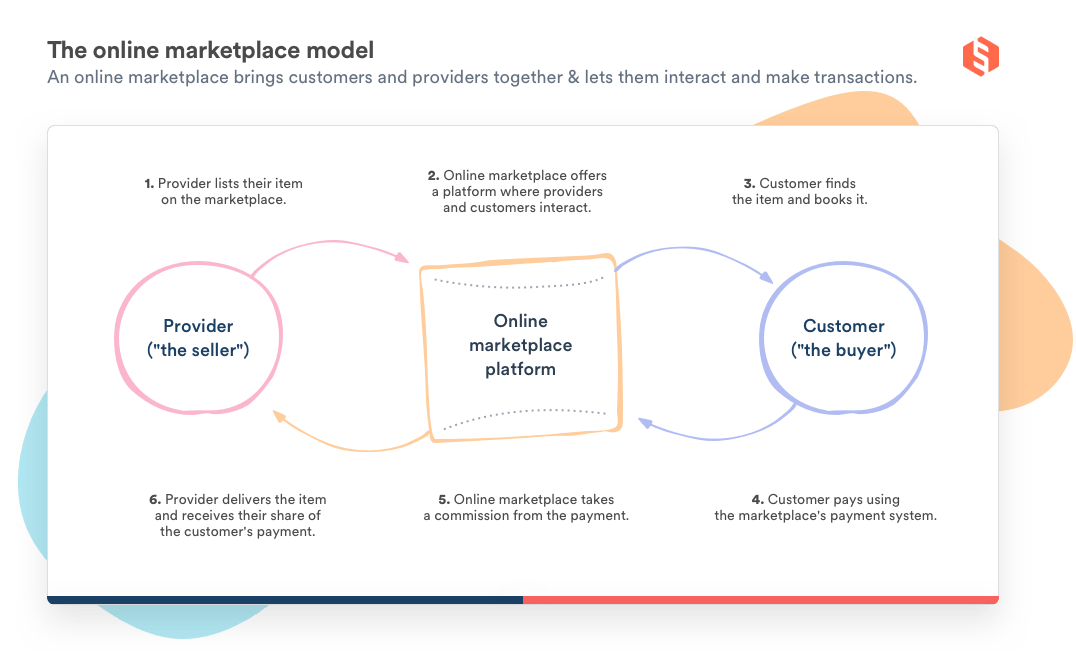
Online marketplaces can be grouped differently based on the participants involved and the product or service being exchanged.
Based on participant involvement, we have:
- C2C (Consumer-to-Consumer) marketplaces
- B2C (Business-to-Consumer) marketplaces
- B2B (Business-to-Business) marketplaces
- Marketplaces that have several audience types.
In terms of what product or service is being exchanged, we have:
- Product marketplaces
- Rental marketplaces
- Service Marketplaces
- Ticketing or experience marketplaces
Several successful businesses have adopted this model, from e-commerce giants like Amazon to thriving startups like Drive Lah.
Here is a list of online marketplaces:
- Product sales: Amazon, eBay, Alibaba, Etsy
- Events: Eventbrite, Atom Tickets, SeatGeek
- Vacation rentals: Airbnb, Tentrr, Vacasa
- Home services: Thumbtack, Dolly, Modsy
- Transportation: Turo, Getaround, Gett
- Fashion: Poshmark, Vinted, Depop
- On-demand services: Uber, Lyft, Doordash
- Groceries: Instacart, Mercato, Grubmarket
- Freelance marketplaces: Upwork, Fiverr, Toptal
- Health & Wellness: Zeel, ResortPass, CoachUp
- Education: Udemy, Coursera, MasterClass
- Childcare: UrbanSitter, KidPass, Wonderschool
At Sharetribe, we’ve worked with thousands of marketplaces, from budding solo ventures to well-funded companies.
In this context, let’s look at three examples of marketplace models built using Sharetribe's platform.
Drive lah is a Singapore-based peer-to-peer car rental marketplace founded by Gaurav Singhal and Dirk-Jan der Westhuizen. To solve the problem of traditional rental companies' high costs and inconvenience, Drive lah enables car owners to rent their vehicles for extra income.
The platform quickly gained traction, growing 10x in just a couple of years. Its agile approach, continuously gathering user feedback and implementing suggestions, drove its success.
From an initial MVP, Drive lah grew into an established platform with mobile apps. In 2021, it secured $3.2 million in pre-series A funding. Gaurav Singhal credits getting to market fast and iterating based on user insights as a key strategy.
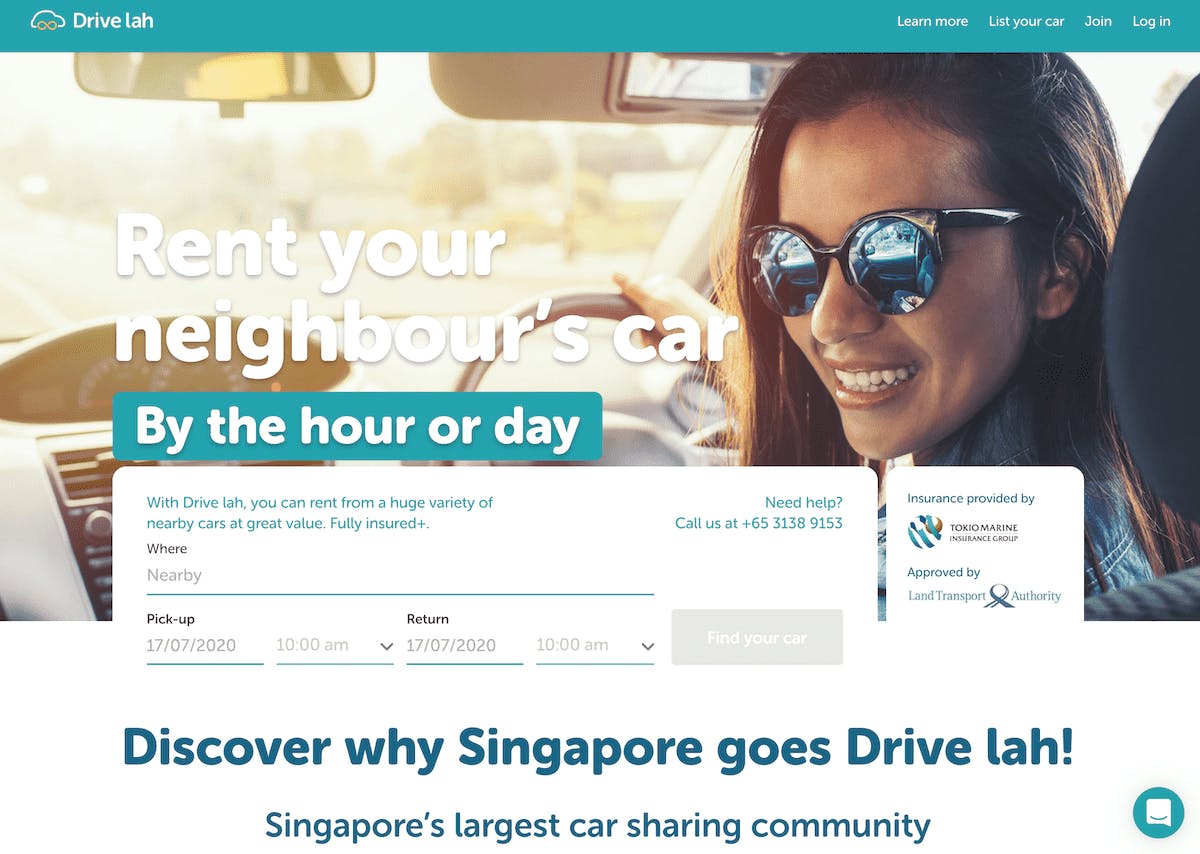
The Octopus Club is a peer-to-peer marketplace for buying and selling preloved kids' items. The platform allows parents to earn extra income by selling clothes, toys, and gear their children have outgrown.
The idea was born from Ana's struggles to continually buy new items for her fast-growing kids while also dealing with the clutter from their outgrown things.
Anna says she knew The Octopus Club could succeed when people she didn’t know started buying and selling from each other.
She grew the marketplace with a crowdfunding campaign and reached her target of £150,000 pre-revenue in 15 days. Since then, the marketplace has grown organically with very little paid marketing.
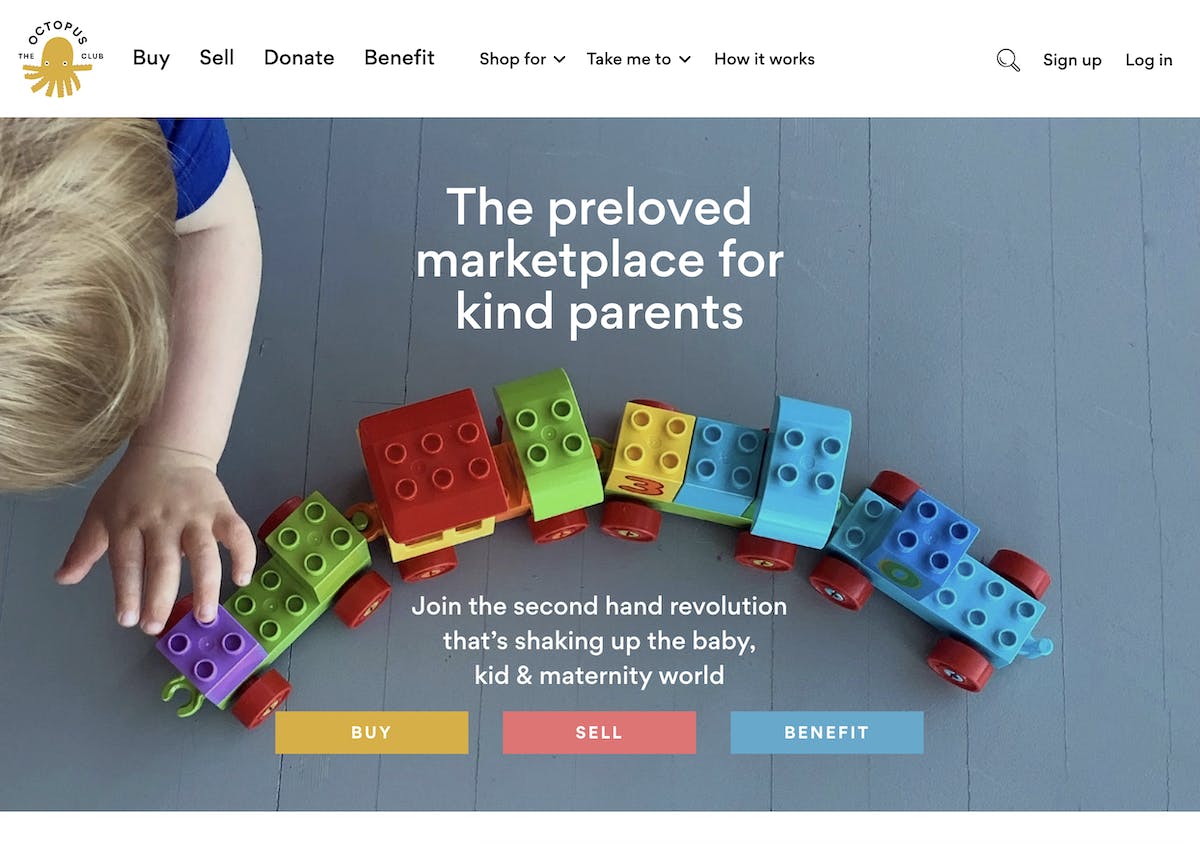
Sugarlift is an online art gallery and marketplace that aims to make the art world more accessible to all. The founder, Wright Harvey, said he wanted to use the platform to bridge the gap between traditional brick-and-mortar galleries and the digital world.
Wright launched Sugarlift despite lacking the technical skills to build a marketplace website. The platform now has over 500 artists; ten to twenty are featured in the physical gallery annually.
Read Sugarlift’s story here.
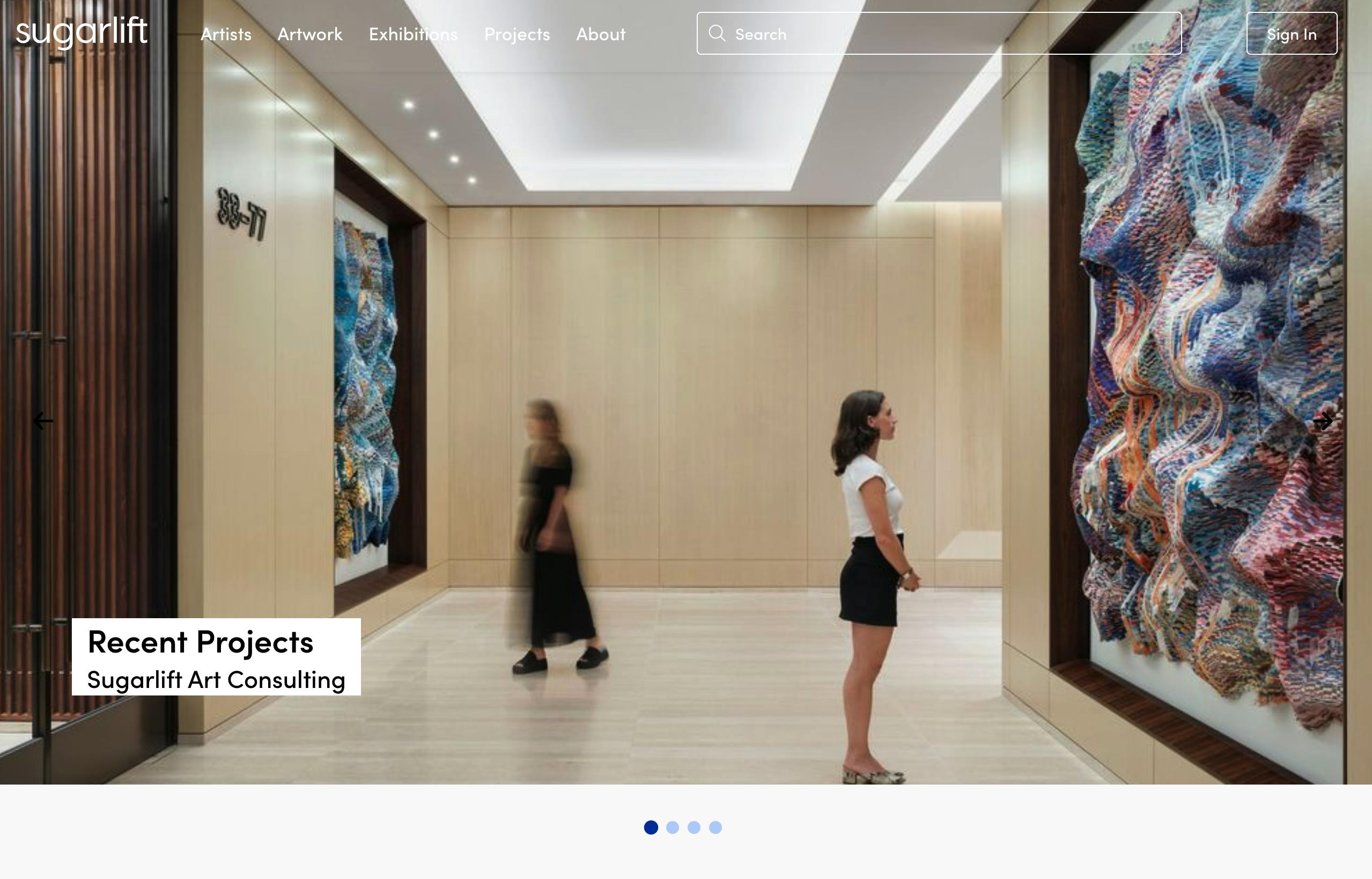
In summary, founders have launched online marketplaces across different niches. They start with an idea based on people’s pain points or problems. Then, they solve these needs with a seamless user experience for both sides.
The multi-vendor model is the key difference between an online marketplace and a traditional eCommerce store. An eCommerce store typically has a single seller, while a marketplace connects multiple third-party sellers with buyers.
This multi-vendor approach is why online marketplaces are sometimes called "multi-vendor eCommerce stores." The defining characteristic is the two-sided model that enables exchanges between distinct participant groups.
From this core difference, we can extract several practical distinctions between marketplaces and eCommerce stores:
- Unlike an e-commerce store, a marketplace founder doesn't need to own any product inventory.
- Third-party sellers create and manage inventory, making it much more cost-effective to start.
- Building a marketplace is like launching two businesses simultaneously (for sellers and buyers).
- The processes for launching, growing, and scaling are different, and marketplaces tend to be more challenging businesses to build. At the same time, marketplaces are much more scalable because no inventory is needed to reach new markets.
However, online marketplaces have much more complicated websites and feature requirements.
For instance, marketplace payments are complex, and you must securely split payments between multiple parties. Plus, you must have seller profiles or "storefronts" and two-sided review systems for buyers and sellers to evaluate each other.
If you’re looking for helpful resources that dig deeper into the marketplace model, check out our articles on How to create a marketplace and What is a two-sided marketplace.
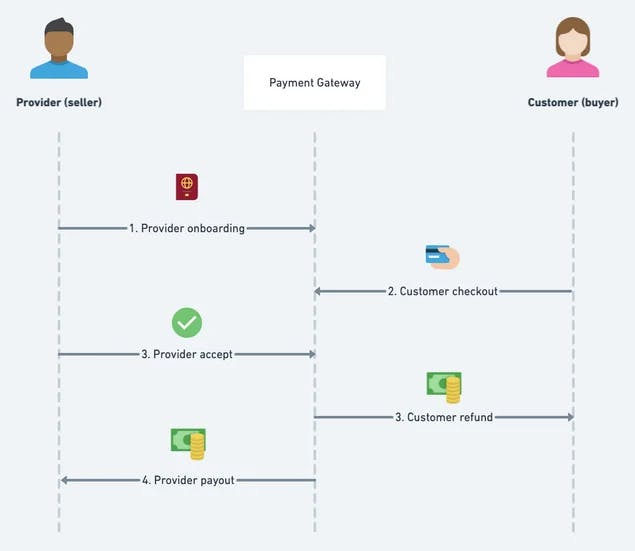
The online marketplace business model has proven scalable, as evidenced by the success of companies like Airbnb, Uber, and Amazon.
Amazon, for example, operates a third-party marketplace in addition to its retail operations. It is currently the sixth-largest company in the world in terms of market capitalization. Many successful and disruptive technology companies, like Uber, Airbnb, and eBay, have also been built on the online marketplace models.
Some key characteristics that make the marketplace model so attractive and scalable include:
- Low overhead and startup costs compared to inventory models
- Easy expansion into new markets and categories via third-party supply
- Powerful network effects
- Asset-light operations with variable costs
Digital marketplaces use various revenue models to keep the platform running and profitable.
At Sharetribe, we studied how the top one hundred marketplaces globally make money. Our findings show that all of them use one or several of these six different business models:
- Commission: The marketplace charges a percentage commission on each transaction facilitated on the platform.
- Listing fees: Sellers pay a fixed fee to list their product or service on the marketplace, regardless of whether a transaction occurs.
- Subscription: The marketplace charges sellers or buyers recurring subscription fees to access the platform and its features.
- Lead fees: Sellers pay a fee to receive highly qualified leads from the marketplace, even if no transaction occurs.
- Freemium access: Sellers can access the core marketplace for free, but fees are charged for premium features, tools, services, and listings.
- Featured listings and ads: Marketplaces may let providers buy more visibility on the site for free, or display third-party ads on the website.
While all six models are potential options, commission fees are the most popular and straightforward, especially for product and service marketplaces. Commissions align incentives and scale naturally with marketplace growth.
However, many successful marketplaces use a combination of 2–3 revenue models based on their specific marketplace needs.
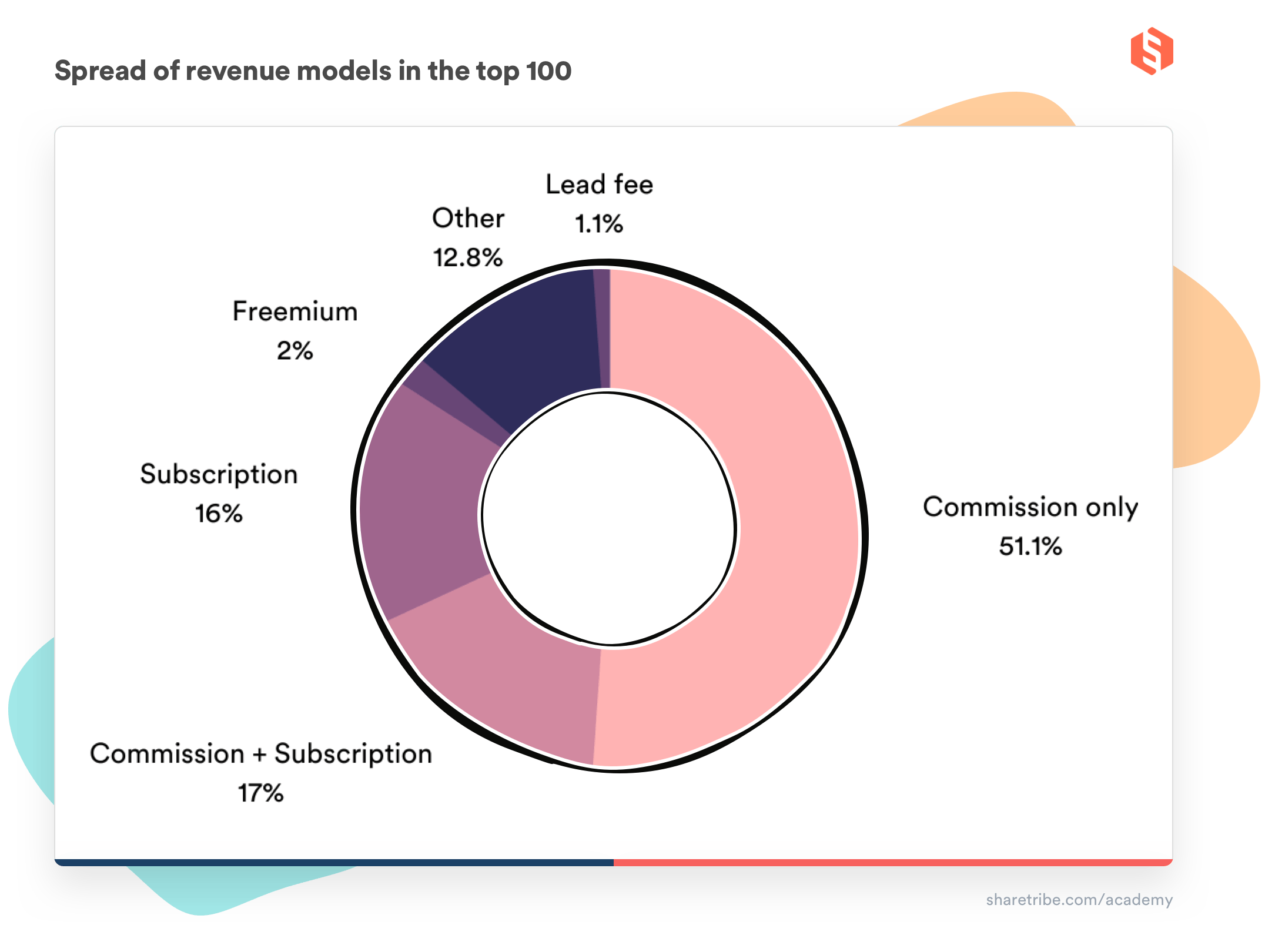
The online marketplace model offers several key benefits compared to traditional business models:
- Low initial risk
- Low initial costs
- Highly scalable model
- Sustainable revenue model.
Unlike traditional retail, online marketplaces don't need an upfront investment in inventory. This minimizes financial risk, especially for businesses launching new products or entering new markets.
Since marketplaces don't own or hold any inventory themselves, the upfront capital requirements are very low.
The rise of marketplace software-as-a-service (SaaS) platforms has also dramatically reduced the technical costs and timelines for getting started.
Sharetribe, for example, allows you to launch a fully functional online marketplace in just one day without any coding. This lets you quickly test your idea and business model through an iterative process without burning excessive cash.
As your marketplace grows, it's easy to expand with custom-coded elements built on top of your Sharetribe-powered platform.
Not needing owned inventory makes marketplaces infinitely scalable into new markets, geographies, and product categories simply by adding more third-party supplies.
You can serve idle demand by tapping into existing supply without capital constraints. Plus, leading marketplaces can benefit from network effects where more suppliers attract more buyers and vice versa in a self-reinforcing loop.
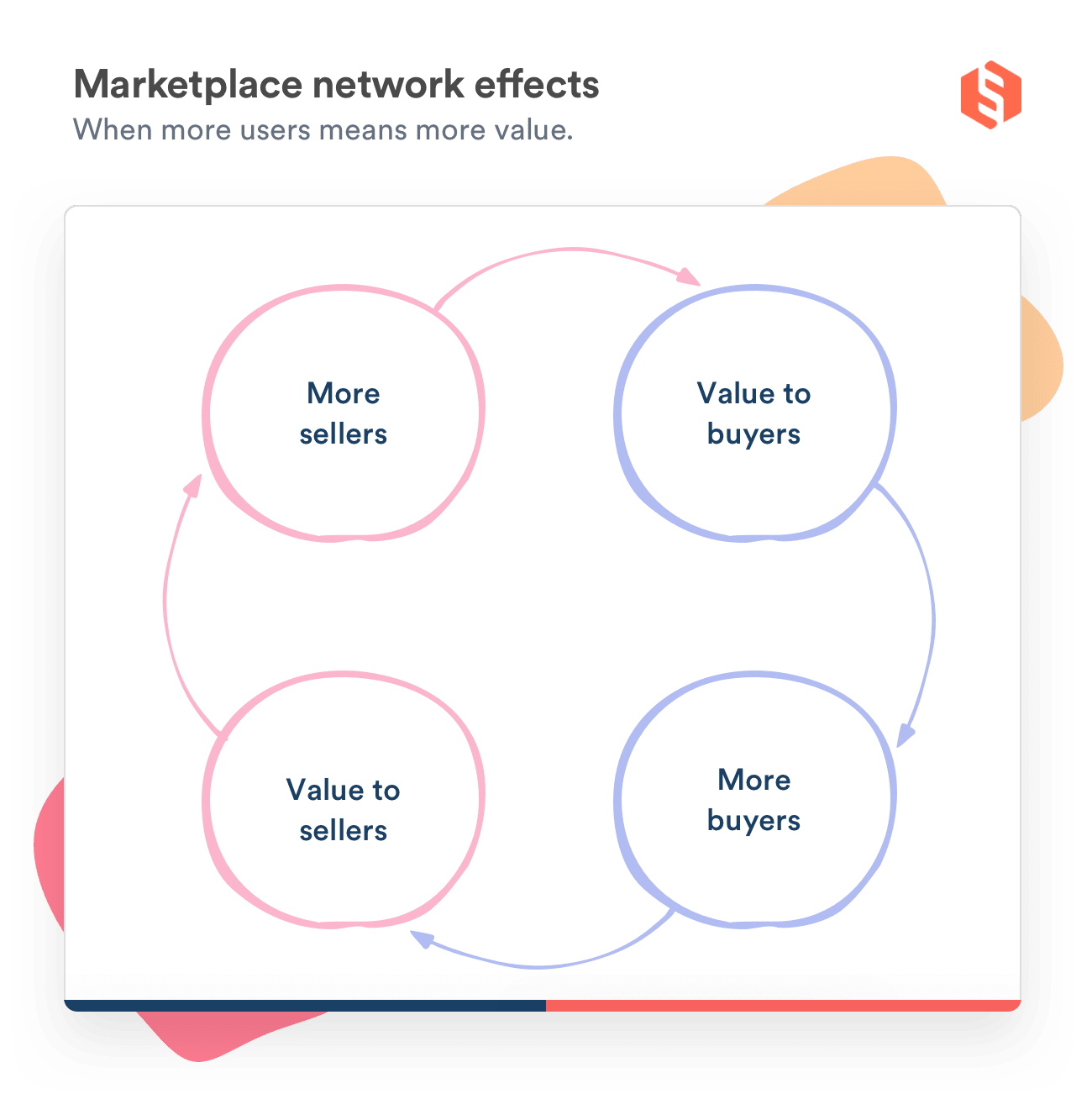
The marketplace business model comes with its own unique set of challenges that founders must overcome.
The three biggest challenges are:
- Overcoming the chicken and egg problem
- Balancing supply and demand
- Preventing platform leakage.
These are issues every founder needs to deal with in the early days of their marketplace.
Your marketplace website needs some sellers to attract buyers, but how do you convince sellers to use your platform without buyers?
This big hurdle of supply vs. demand is called the chicken-and-egg problem. Attracting both simultaneously is difficult when starting from scratch.
However, big marketplaces like Amazon solve this challenge by initially focusing on building a strong supply side. This is because there will be nothing to attract buyers without sufficient inventory or services. Whereas you can attract sellers with relevant value propositions and perks like low commission fees, easy onboarding and more.
Building a marketplace is like constructing two different businesses simultaneously—one for the supply side (sellers/providers) and another for the demand side (buyers/customers).
Reaching and maintaining liquidity by satisfying both sides is a constant balancing act that successful marketplaces must master.
Here are four tips that can help you:
- Start small. It’s easier to reach and maintain liquidity in a small initial market.
- Understand the needs of both sides to offer relevant value propositions to each.
- Attract demand with high-quality supply.
- Invest in an intuitive user experience for both sides of the marketplace.
A major risk is "leakage," where buyers and sellers connect through the marketplace but then take their transactions off the platform to avoid paying fees.
This undermines the marketplace's revenue model. However, you can solve this by providing consistent value that makes operating outside the platform unattractive.
Some measures that can help prevent leakage include:
- Low transaction fees.
- Security and trust.
- Good on-platform experience.
- Technology and tools that are worth the commission.
While there are difficulties, building an online marketplace can be hugely rewarding. At Sharetribe, we’ve worked with thousands of online marketplaces. More often than not, the ones that succeed follow a version of these ten steps:
- Validate your idea
- Build a Minimum Viable Product (MVP)
- Onboard your initial sellers
- Launch and learn
- Scale
Let’s go through these steps briefly.
Don't jump straight into development. Conduct thorough market research to validate your marketplace concept.
This involves understanding your target audience, their needs, and their competitiveness. Talk to potential buyers and sellers, and refine your value proposition based on their feedback.
Don't try to build a massive, complex marketplace from day one. Start with a lean, minimum viable platform (MVP)—a basic version of your marketplace that solves the core problem for both buyers and sellers.
Platforms like Sharetribe allow you to build up a basic marketplace in just a day without coding. So, you can quickly test your concept with real users and gather valuable feedback before investing heavily in features.
Attracting initial sellers or providers should be the priority over demand or buyers. Having inventory available makes your marketplace instantly more appealing and valuable to buyers when they arrive.
Consider offering incentives like lower commission rates or marketing support to attract sellers initially. Targeting a niche market can also be a good strategy, as it allows you to focus on a specific user base with shared interests.
Once your MVP is ready with sellers, launch your marketplace and start acquiring buyers.
Be sure to monitor user behavior and feedback closely and analyze your data to understand what's working and what needs improvement. Then, use the information to refine your platform and features continuously.
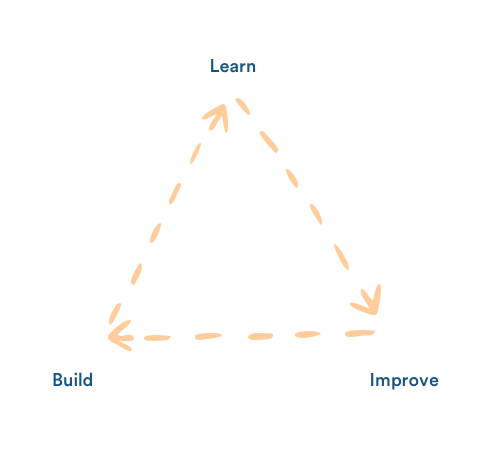
As your user base grows, take advantage of the online marketplace model’s natural ability to scale. The platform can handle growing users and transactions without substantial extra infrastructure.
For more comprehensive guidance on all aspects of building a successful online marketplace, check out Sharetribe's article on the complete guide to creating a marketplace.
The online marketplace model has emerged as one of today's most powerful and lucrative business models. While building a successful two-sided marketplace is certainly challenging, the potential rewards make it an incredibly compelling opportunity.
Despite the hurdles, companies like Amazon, Airbnb, Uber, and others have disrupted massive industries and become multi-billion dollar companies with the marketplace model.
The best way to learn is by doing. With the right strategies, platforms like Sharetribe allow you to build an MVP marketplace quickly using a lean, iterative approach.
Plus, aspiring marketplace entrepreneurs can rapidly validate their ideas and start laying the foundations for their own breakthrough marketplace businesses.
The first step is to take action—start building your marketplace today.
Start your 14-day free trial
Create a marketplace today!
- Launch quickly, without coding
- Extend infinitely
- Scale to any size
No credit card required
